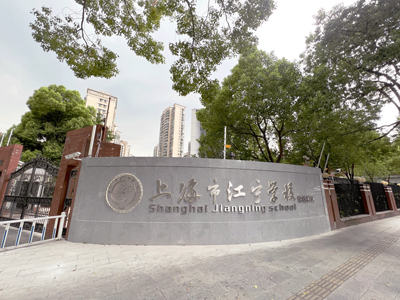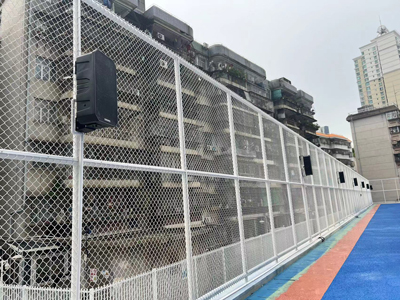 Project Demands
Project DemandsCombined with the current examination room configuration, the ZJCM needs to transform 119 cultural examination rooms in the southern area into standardized examination rooms for art to meet the requirements of the music and dance professional examinations.
At the same time, taking into account the needs of daily teaching, the newly constructed campus broadcasting system should
not only ensure that the music in 119 classrooms for examination is completely synchronized without delay, with high-fidelity stereo sound broadcast, and lossless compressed exam audio files, but guarantee that it can play stereo teaching audio files locally in each classroom to meet the needs of exams and teachers’ daily teaching.
 Solution Design
Solution DesignIn response to the needs of Zhejiang Conservatory of Music, DSPPA team adopts the industry’s original no-latency Dante network PA system, and designs
a no-latency campus broadcasting system that supports high-fidelity and stereo audio broadcast for its standardized examination rooms.
In order to achieve the effect of stereo broadcasting, DSPPA has installed 2 network speakers for each examination room classroom. During the examination period, the broadcast server in the central computer room can collect stereo audio sources for program broadcasting. In addition, each classroom is equipped with a set of teaching microphone system. In daily teaching, it can output the stereo audio source through the classroom computer or audio source machine to realize local teaching sound reinforcement with CD-level sound quality.
 System Connection Diagram
System Connection Diagram Project Effects
Project EffectsWith Dante and DSPPA protocols, DSPPA no-latency network PA system has a network delay no more than 34μs under ideal circumstances. However, most network PA systems based on TCP/IP protocol on the market have a network delay of about 70ms, which is around 2000 times that of a no-latency network PA system! It supports 16-bit sampling at 48kHz sampling rate, truly achieving CD-level sound quality. At the same time, it is also the only broadcasting system in the industry that supports playing lossless compressed music files in wav. format. Therefore, this no-latency network PA system perfectly solves the network delay of the traditional network PA system, ensuring that the audio files broadcast in the college’s 119 classrooms are completely synchronized during the exam, and meeting the requirements for the construction of a standardized examination room for art.

 System Advantages
System Advantages1. No-latency broadcast, real-time sync of all terminals
The traditional IP PA system has a high latency (about 70ms), and the terminal program playback is not completely synchronized, while the no-latency network PA system has a very low latency (only 34μs), which ensures that all broadcast terminal audio is completely synchronized.
2. With high-fidelity sound quality and CD-level effects
It can support 16-bit sampling at 48kHz sampling rate, and playback of lossless compressed music in wav. format, truly achieving CD-level high-fidelity sound quality.
3. Support dual-channel stereo broadcast
Traditional PA systems are all mono channel sound reinforcement, while no-latency PA systems can achieve stereo collection and broadcasting for professional sound reinforcement.
4. With most of the functions of traditional network PA system
It has functions such as timing broadcast, fire linkage, one-key alarm, remote paging, intercom for help, remote PC control, and mobile APP control.
5. Support secondary development to meet individual needs
The system can be customized according to the individual needs of the project, and it also supports the system connection of secondary development.
6. Strong scalability
The system supports the access of other Dante protocol equipment for system expansion and platform integration.
Applications:
This system is applicable to shopping malls, factories, hotels, airports, docks, university towns, schools, large-scale gathering sites (such as Expo Park), sports stadiums, industrial parks, parks, rail transit and highways, medical institutions, etc.













 DSPPA | DSP350F Directional Sound System for Shanghai Jiangning SchoolAugust 28, 2024Abstract: The school has integrated our directional sound system for enhanced sound management and elevated audio experience.view
DSPPA | DSP350F Directional Sound System for Shanghai Jiangning SchoolAugust 28, 2024Abstract: The school has integrated our directional sound system for enhanced sound management and elevated audio experience.view DSPPA | DSP350F Directional Speaker for a School Playground in ShenzhenAugust 27, 2024Abstract: Our DSP350F directional speakers deliver precise audio across the campus, enhancing educational efficiency and campus quality.view
DSPPA | DSP350F Directional Speaker for a School Playground in ShenzhenAugust 27, 2024Abstract: Our DSP350F directional speakers deliver precise audio across the campus, enhancing educational efficiency and campus quality.view